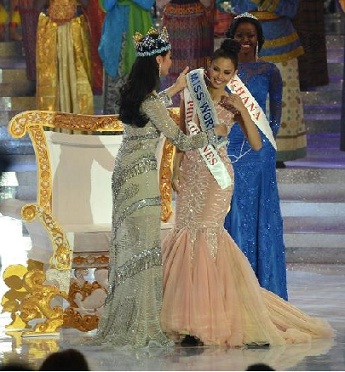Interbrand, one of the largest branding consultancies in the world has recently released their list of 100 Best Global Brands of 2013 mentioning companies from different sectors including Technology. From there we took all the leading technology brands and compiled them in one simple list.

The tech companies listed below were taken from Interbrand’s 100 Best Global Brands 2013. We included a brief description of each company followed by their corresponding brand value.
1. Apple

Apple Inc., formerly Apple Computer, Inc., is an American multinational corporation headquartered in Cupertino, California that designs, develops, and sells consumer electronics, computer software and personal computers. Popular products are the Mac, iPod, iPhone (5S, 5C), iPad (4, mini), OSX and iOS (7). Apple also claimed the top spot in Interbrand’s 100 Best Global Brands 2013, passing Coca-Cola in the process.
Brand Value: $98.3 billion
2. Google

Google Inc. is an American multinational corporation specializing in Internet-related services and products. These include search, cloud computing, software and online advertising technologies. Products are mostly focused on advertising via AdWords, search engine via Google Search, productivity tools like Gmail, enterprise products with Google Apps, and mobile OS via Android and Chrome.
Brand Value: $93.3 billion
3. IBM

The International Business Machines Corporation (commonly referred as IBM) is an American multinational technology and consulting corporation, with headquarters in Armonk, New York, United States. IBM manufactures and markets computer hardware and software, and offers infrastructure, hosting and consulting services in areas ranging from mainframe computers to nanotechnology.
Brand Value: $78.8 billion
4. Microsoft

Microsoft Corporation is an American multinational software corporation headquartered in Redmond, Washington that develops, manufactures, licenses, and supports a wide range of products and services related to computing. Popular products include Windows (8) OS, Windows Phone (8) OS, Microsoft Surface tablet PCs, and the Xbox (One). On September 3, 2013, Microsoft agreed to buy Nokia’s mobile unit for $7.17 billion.
Brand Value: $59.5 billion
5. Samsung

Samsung Group is a South Korean multinational conglomerate company headquartered in Samsung Town, Seoul. Samsung offers a wide variety of products ranging from home appliances, consumer electronics to semiconductors. The company is also well-known in the world of smartphones and tablets with the Samsung Galaxy S4 and the recently announced Samsung Galaxy Note 3 as the most popular to date.
Brand Value: $39.6 billion
6. Intel

Intel Corporation is an American multinational semiconductor chip maker corporation headquartered in Santa Clara, California. Intel is the world’s largest and highest valued semiconductor chip maker, based on revenue. One of their most popular products are the 4th Generation Intel Core processor family and their latest Intel Atom processor for smartphones and tablets.
Brand Value: $37.3 billion
7. Cisco

Cisco Systems, Inc. is an American multinational corporation headquartered in San Jose, California, that designs, manufactures, and sells networking equipment. Products include VOIP phones, high-end routers and switches, network security, and Cloud Computing services.
Brand Value: $29 billion
8. HP

The Hewlett-Packard Company or HP is an American multinational information technology corporation headquartered in Palo Alto, California, United States. It provides products, technologies, software, solutions and services to consumers, small- and medium-sized businesses (SMBs) and large enterprises, including customers in the government, health and education sectors.
Brand Value: $25.8 billion
9. Oracle

Oracle Corporation is an American multinational computer technology corporation headquartered in Redwood City, California, United States. The company specializes in developing and marketing computer hardware systems and enterprise software products – particularly its own brands of database management systems.
Brand Value: $24 billion
10. SAP

SAP AG is a German multinational software corporation that makes enterprise software to manage business operations and customer relations. Headquartered in Walldorf, Baden-Württemberg, Germany, with regional offices around the world, SAP is the leader in the market of enterprise applications in terms of software and software-related service.
Brand Value: $16.7 billion
11. Canon

Canon Inc. is a Japanese multinational corporation specialized in the manufacture of imaging and optical products, including cameras, camcorders, photocopiers, steppers, computer printers and medical equipment. Its headquarters are located in Ota, Tokyo, Japan. Their most popular are the PowerShot and Digital Ixus series of digital cameras, and the EOS series of digital single-lens reflex cameras (DSLR).
Brand Value: $10.9 billion
12. Philips

Koninklijke Philips N.V. (Royal Philips, commonly known as Philips) is a Dutch multinational engineering and electronics conglomerate headquartered in Amsterdam. It is one of the largest electronics companies in the world and employs around 122,000 people across more than 60 countries. Products include home appliances, lighting, and medical equipment.
Brand Value: $9.8 billion
13. Siemens

Siemens AG is a German multinational engineering and electronics conglomerate company headquartered in Munich and Berlin, Germany. It is the largest Europe-based electronics and electrical engineering company. Products include communication systems, power generation technology, lighting, medical equipment, and home appliances.
Brand Value: $8.5 billion
14. Sony

Sony Corporation, commonly referred to as Sony, is a Japanese multinational conglomerate corporation headquartered in Konan Minato, Tokyo, Japan. Its diversified business is primarily focused on the electronics, game, entertainment and financial services sectors. The company is one of the leading manufacturers of electronic products for the consumer and professional markets. Popular products include BRAVIA TVs, the PlayStation (4) gaming console, and the Xperia line of Android smartphones.
Brand Value: $8.4 billion
15. Facebook

Facebook is an online social networking service founded in February 2004 by Mark Zuckerberg with his college roommates and fellow Harvard University students Eduardo Saverin, Andrew McCollum, Dustin Moskovitz and Chris Hughes. Most of Facebook’s revenue comes from advertising. The company filed for a US$5 billion initial public offering (IPO) on February 1, 2013, making it one of the biggest in tech history and the biggest in Internet history. As of March 31, 2013, Facebook has a total of 1.11 billion active users globally.
Brand Value: $7.7 billion
16. Nokia

Nokia Corporationis a Finnish multinational communications and information technology corporation that is headquartered in Espoo, Finland. Its principal products are mobile telephones and portable IT devices. On September 3, 2013, Nokia’s mobile unit was bought by Microsoft for $7.17 billion. Nokia’s current popular products are the Nokia Asha and Windows Phone 8-powered Lumia smartphones.
Brand Value: $7.4 billion
17. Dell

Dell Inc. (formerly Dell Computer Corporation) is an American multinational computer technology company based in Round Rock, Texas, United States, that develops, sells, repairs and supports computers and related products and services. As of the second quarter of 2013, it ranked as the third largest PC vendor in the world after HP and Lenovo.
Brand Value: $6.8 billion
18. Nintendo

Nintendo Co., Ltd. is a Japanese multinational consumer electronics company headquartered in Kyoto, Japan. Nintendo is the world’s largest video game company by revenue. The company is mostly known for its Nintendo DS line of handheld consoles with the 3DS becoming the best selling console in the United States for four consecutive months as of August 2013. In the same month, Nintendo introduced their latest product, the Nintendo 2DS, which is a version of the 3DS without a stereoscopic 3D screen.
Brand Value: $6 billion
19. Panasonic

Panasonic Corporation, formerly known as Matsushita Electric Industrial Co., Ltd., is a Japanese multinational electronics corporation headquartered in Kadoma, Osaka, Japan. Panasonic is involved in the manufacturing of a wide range of products like TVs, professional displays, automotive systems, digital cameras (Lumix), smartphones (Eluga), and home appliances to name a few.
Brand Value: $5.8 billion
20. Adobe

Adobe Systems, Inc., is an American multinational computer software company headquartered in San Jose, California, United States. The company has historically focused upon the creation of multimedia and creativity software products, with a more-recent foray towards rich Internet application software development. Popular products include Photoshop, Acrobat, Illustrator, Premier Pro, and After Effects.
Brand Value: $4.9 billion
{Interbrand} {Wikipedia}
The post Top 20 Best Technology Brands of 2013 appeared first on YugaTech | Philippines, Tech News & Reviews.




























